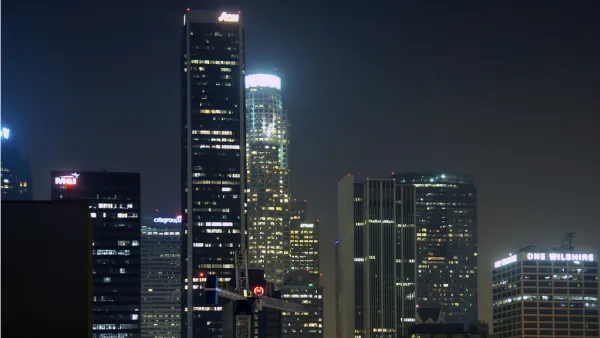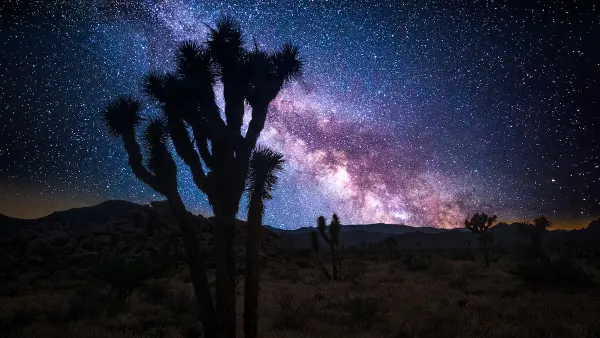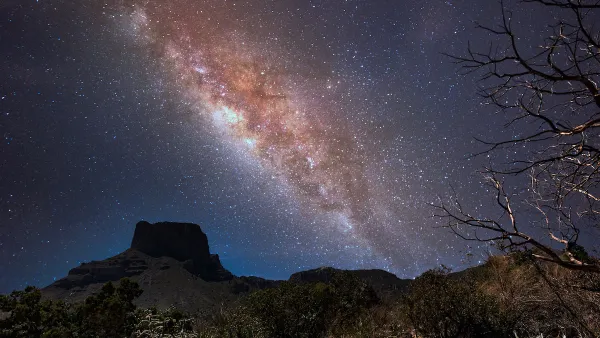There's a third dimension to sprawl: all those photons that emanate from street lights, houses, and vehicles. As author Paul Bogard discusses in The End of Night, light pollution is an overlooked menace that presents a new frontier for planners.
"The trillions of points of light in the true night sky are no match for the mere billions on the ground. You know the culprits: streetlights; parking lots; gas stations; billboards; preening McMansions; 'security' lighting; athletic fields; headlights....and on and on. Parking lots alone can account for up to 50% of a city’s outdoor lighting. It all piles up in icteritious 'domes' that hover above every urban area in the country."
"Just as Americans in the 1950s gleefully inhaled smog in the name of progress, Americans now surrender the night for much the same reason. Tablets and smart phones are today’s cigarettes, enabling us to further disrupt our eyesight, hormone production, and circadian rhythms."
"Ordinances regulating light pollution could be integrated into a general plan, replete with Bortle ratings to set goals and track progress. The International Dark-Sky Association, an admittedly quirky organization to which Bogard makes repeated reference, has model programs that can help cities reconnect their citizens to the sublime."
"There's an argument to be made that atmospheric light pollution should be covered under the California Environmental Quality Act. CEQA does refer to light pollution, but that typically refers to nuisances in an immediate area. The entire skyscape might be a tough one for public officials to regulate: it is either immutable or, at a few light years’ remove, too far out of their jurisdiction. But surely the health risks of artificial light to 39 million people might justify action?"
FULL STORY: The Dark Side of Environmental Quality

National Parks Layoffs Will Cause Communities to Lose Billions
Thousands of essential park workers were laid off this week, just before the busy spring break season.

Retro-silient?: America’s First “Eco-burb,” The Woodlands Turns 50
A master-planned community north of Houston offers lessons on green infrastructure and resilient design, but falls short of its founder’s lofty affordability and walkability goals.

Delivering for America Plan Will Downgrade Mail Service in at Least 49.5 Percent of Zip Codes
Republican and Democrat lawmakers criticize the plan for its disproportionate negative impact on rural communities.

Test News Post 1
This is a summary

Test News Headline 46
Test for the image on the front page.

Balancing Bombs and Butterflies: How the National Guard Protects a Rare Species
The National Guard at Fort Indiantown Gap uses GIS technology and land management strategies to balance military training with conservation efforts, ensuring the survival of the rare eastern regal fritillary butterfly.
Urban Design for Planners 1: Software Tools
This six-course series explores essential urban design concepts using open source software and equips planners with the tools they need to participate fully in the urban design process.
Planning for Universal Design
Learn the tools for implementing Universal Design in planning regulations.
EMC Planning Group, Inc.
Planetizen
Planetizen
Mpact (formerly Rail~Volution)
Great Falls Development Authority, Inc.
HUDs Office of Policy Development and Research
NYU Wagner Graduate School of Public Service





























